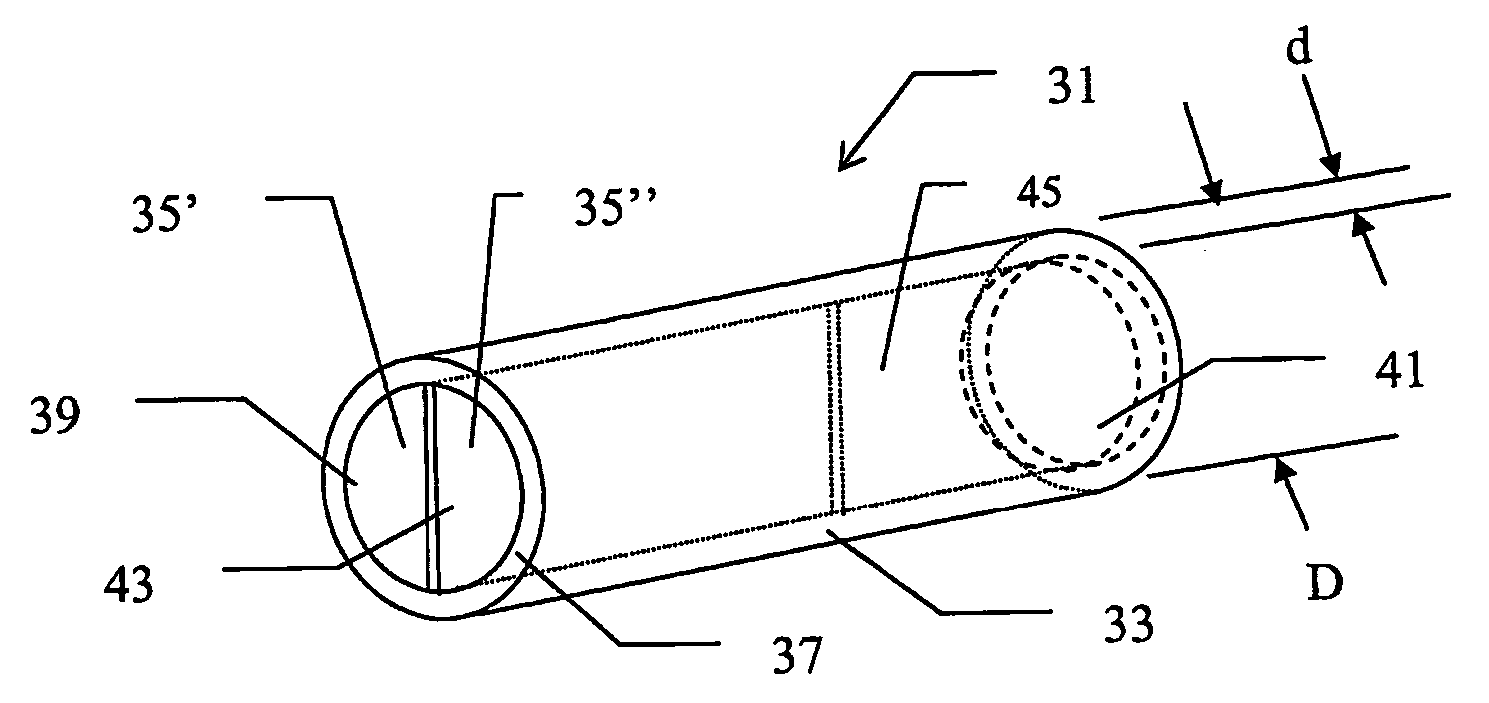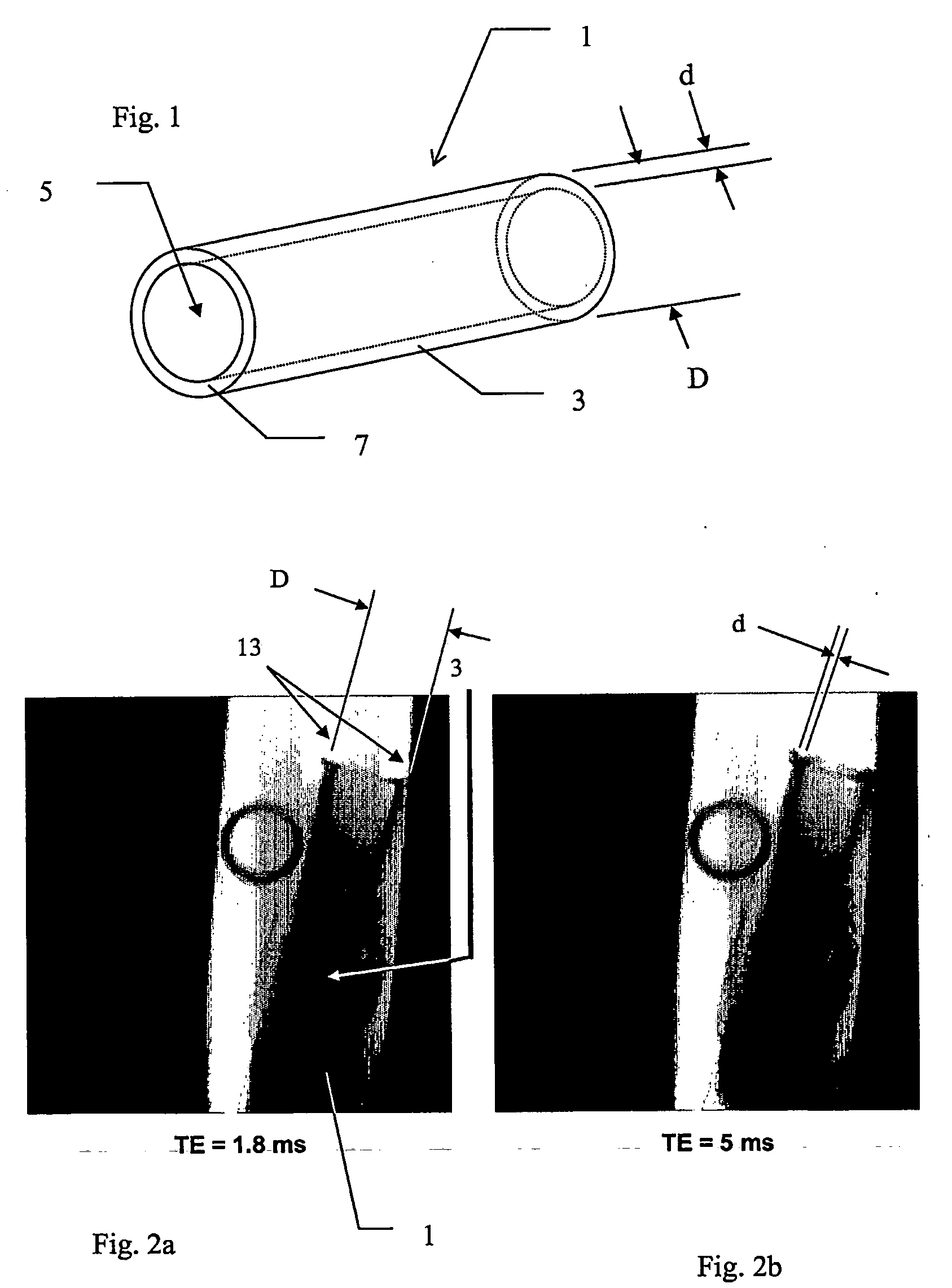Method of magnetic resonance imaging
a magnetic resonance imaging and magnetic resonance technology, applied in the field of magnetic resonance imaging (mri), can solve the problems of inability to provide the desired contrast, inability to inability to achieve the desired contrast, etc., and achieve the effect of facilitating the visualisation of an invasive devi
- Summary
- Abstract
- Description
- Claims
- Application Information
AI Technical Summary
Benefits of technology
Problems solved by technology
Method used
Image
Examples
example 1
[0051] An aqueous solution of hyperpolaxised dimethylsuccinate (1-13C) was circulated in a closed loop moulded in a guide wire of glass-fibre reinforced plastic. The T1 of this compound under these circumstances is 70 s. The guide wire was inserted in the stomach of a rat and was imaged at the 13C frequency at 4 images per second. The images were colour coded and overlaid with a proton image of the rat. The guide wire is clearly visible in the rat as can be seen from the image in FIG. 5.
example 2
[0052]FIG. 2 shows the results of an experiment carried out using an invasive device (1) with a body (3) made from carbon fibre with a diameter D of 10 mm and a wall (7) thickness d of 1 mm. The electrical conductivity of the carbon fibre was ˜1·105 S / m (c.f. copper: 5.9·107 S / m). Device (1) was placed in a syringe containing water and imaged inside a 2.4 T magnet. Gradient echo images were acquired with echo time 1.8 ms as shown in FIGS. 2a and 5 ms as shown in FIG. 2b. Similar results were obtained with both echo times. Minor susceptibility artefacts (13) can be seen near the second open end of the invasive device. No signal is obtained from the lumen (3) of the of the device (except near to the second open end where radio frequency radiation has entered the lumen (3) from said second open end) showing that the wall of the invasive device is opaque to radio frequency radiation.
example 3
[0053] Examples of possible embodiments of invasive device cross-sections are shown in FIGS. 4a-4d.
[0054]FIG. 4a shows an invasive device formed of two concentric tubes (401, 403) with the inner tube (403) held in place in the centre of the outer tube (401) by an open system of webs (405). A first lumen (407) is formed in the interior of said inner tube and a second lumen (409) is formed by the annular space between the two tubes (401, 403).
[0055]FIG. 4b shows an invasive device formed of two concentric tubes (411,413), with the inner tube (413) held in place in the centre of the outer tube (411) by two continuous webs (415′, 415″). A first lumen (417) is formed in the interior of said inner tube (413) and a second lumen (419′) and a third lumen (419″) are formed by the semi-annular space between the two tubes (411, 413) and the webs (415′, 415″).
[0056]FIG. 4c shows an invasive device comprising an elongated body (421) with four lumens (423) formed in it.
[0057]FIG. 4d shows an i...
PUM
 Login to View More
Login to View More Abstract
Description
Claims
Application Information
 Login to View More
Login to View More - R&D
- Intellectual Property
- Life Sciences
- Materials
- Tech Scout
- Unparalleled Data Quality
- Higher Quality Content
- 60% Fewer Hallucinations
Browse by: Latest US Patents, China's latest patents, Technical Efficacy Thesaurus, Application Domain, Technology Topic, Popular Technical Reports.
© 2025 PatSnap. All rights reserved.Legal|Privacy policy|Modern Slavery Act Transparency Statement|Sitemap|About US| Contact US: help@patsnap.com



